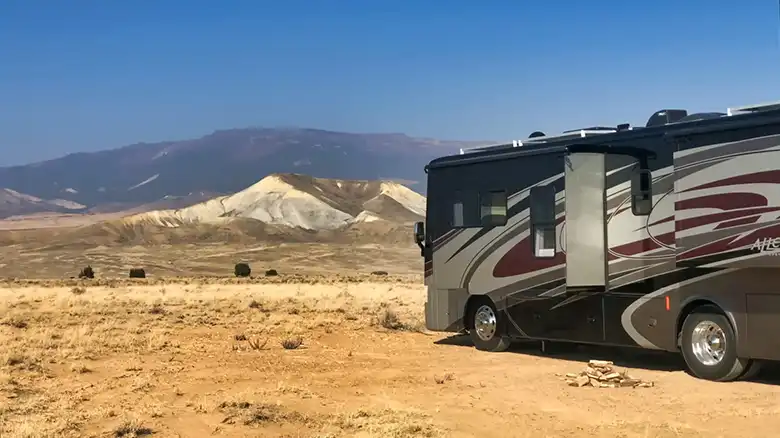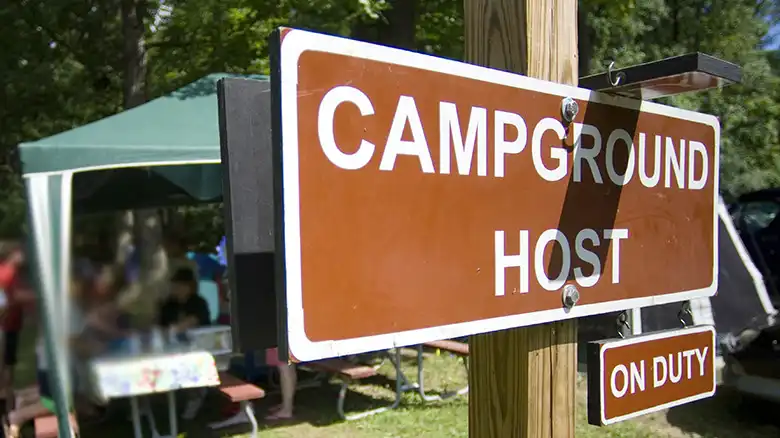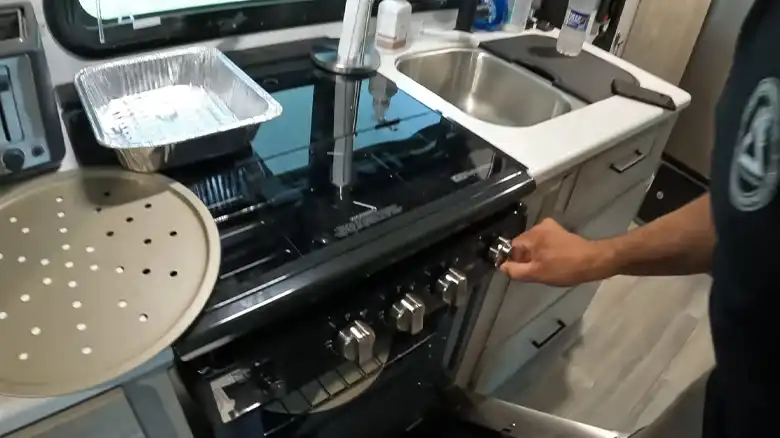Camping allows us to connect with nature, leave behind the stress of daily life, and make lasting memories with friends and family. However, the costs associated with camping can add up quickly and price some people out of these experiences. Thankfully, with the right research and planning, it is possible to discover free and low-cost campsites to meet almost any budget.

Why Choose Free or Budget-Friendly Campsites?
Free and low-cost campsites offer a multitude of benefits, making them an attractive option for both seasoned campers and those embarking on their first outdoor adventure.
Affordability
The most obvious perk is saving money. Camping on free public lands or scoring discounted rates at campgrounds allows you to cut back the cost of lodging on your next adventure. This leaves more room in your budget for activities, food, park access fees, and other trip expenses.
Accessibility
Lower-cost options also make camping more financially accessible. Outdoor recreation should be open to everyone regardless of economic status. Finding ways to reduce camping costs is one method of breaking down barriers to enjoy nature.
Budget-Friendly Travel
In addition to single overnight stays, free and cheap sites unlock the chance to take extended camping road trips. Knowing where to camp for free or cheap every night makes ambitious itineraries feasible without breaking the bank.
Connecting with Nature
Saving money camping means more funds to visit awe-inspiring national parks and forests. Immersing yourself in these landscapes is a privilege. Saving on lodging allows you to channel resources toward protecting public lands or environmental causes.
How to Find Free and Low-Cost Campsites?
Many people are shocked to discover just how many free or discounted campsites exist once they start searching. National forests and BLM lands offer free or low-cost camping opportunities across the United States. These lands are managed by the USDA Forest Service and the Bureau of Land Management, respectively.
Both national forests and BLM lands allow dispersed camping for RVs, vans, and sometimes tent camping. The length of stay limits can vary, so it’s important to check local regulations before arriving. In general, national forests have a 14-day stay limit, while BLM lands typically have a 30-day stay limit.
Before heading out to camp, it’s important to do some research to know what you might find in the area. This includes checking for potential hazards like wildlife, weather conditions, and road closures. It’s also a good idea to familiarize yourself with Leave No Trace principles to ensure that you minimize your impact on the environment. Here’s how to find them –
Online Resources
There are several websites dedicated to helping campers find free and cheap camping spots. Three of the most popular online databases are:
- FreeCampsites.net
This site allows you to browse over 45,000 free and low-cost campsites. You can filter your search by location, campsite features, cell phone service, reviews, and more. Interactive maps make it easy to see all your options in a given area. Information on each site includes amenities, reservation details, stay limits, parking, fees, and user reviews.
- USCampgrounds.info
This database focuses primarily on federally managed campgrounds. It provides info on over 4,000 locations in national parks/forests, state parks, BLM land, etc. You can browse campsites by state location, along popular road trip routes, or by agencies like the National Park Service or Army Corps of Engineers. Site listings share amenities, contact info, prices, and real visitor commentary.
Mobile Applications
In addition to websites, several mobile apps utilize crowdsourcing to identify free and low-cost camping areas:
- The Dyrt App
The Dyrt app lets you search for campgrounds, read reviews, view photos, and see average reported camping costs all from your phone. Filters and interactive maps help isolate budget-friendly options in any destination. You can even save spots to monitor availability and pricing.
- Hipcamp App and Website
Hipcamp works similarly to Airbnb but for camping. Property owners list their private land – like farms, nature preserves, and vineyards – for public camping. Nightly rates as low as $10 unlock unique stays beyond standardized campgrounds.
RV Parky App
While tailored more for RV travelers, RV Parky contains extensive info on public and private low-cost camping. Recent campers share real ratings, noise levels, price fluctuations, and more to select budget-rated favorites. Custom offline maps mean no cell signal is required while navigating to your site.
Top Locations for Free or Low-Cost Camping
Now that you know where to search, here are some well-known areas to unlock affordable overnights under the stars:
National Forests
Oregon and Washington’s gorgeous forests have over 1,500 free campgrounds alone. Montana, Idaho, Colorado, and California also provide stunning free camping.
BLM Land
Lands managed by the Bureau of Land Management offer over 5,400 free camping areas in western states. Examples include Mojave National Preserve (California) and Anza-Borrego Desert State Park (California).
State Forests
Michigan boasts nearly 100 rustic and inexpensive campgrounds across its state forests. Minnesota, Wisconsin, and Pennsylvania also have excellent state forest options.
Regional Parks
Washington’s regional parks contain over 100 low-cost campground options, like Dash Point State Park and Tolmie State Park. Search for regional gems close to home.
Helpful Tips for Finding the Best Campsites
While availability varies regionally and seasonally, focus on these areas in your search:
Off-Peak Seasons
Campground crowding and prices drop before Memorial Day and after Labor Day. The fall and winter (where weather allows) also see fewer bookings. Just confirm sites are open and accessible.
Public Lands
National forests and Bureau of Land Management lands offer over 10,000 free campgrounds nationwide. Most don’t take reservations but are available first-come, first-served.
Local Resources
City and county parks, state fishing lakes, local campgrounds, etc. may have free or inexpensive sites. Check the township and recreation department websites for details.
Membership Discounts
Holding an RVing club membership (Good Sam, Passport America), senior discount pass or military ID can qualify you for percentage-off rates even during peak times.
Safety and Regulations for Free Campsites or Dispersed Camping
Free and low-cost campsites offer a unique and affordable way to experience the outdoors. However, it’s important to be aware of the safety considerations and regulations that apply to these campsites to ensure a safe and enjoyable experience.
Essential Safety Tips
Be Prepared: Before heading out to a free campsite, check the weather forecast and road conditions. Pack appropriately for the weather and bring essential supplies, including a first-aid kit, food, water, and appropriate clothing.
Wildlife Awareness: Familiarize yourself with the types of wildlife in the area and take precautions to avoid encounters. Store food properly, keep a clean campsite, and avoid approaching wildlife.
Fire Safety: Use caution when building campfires. Only use designated fire rings and ensure the fire is completely extinguished before leaving the campsite.
Leave No Trace: Practice Leave No Trace principles to minimize your impact on the environment. Pack out all trash, dispose of waste properly, and respect the natural surroundings.
Camping Rules and Guidelines
Dispersed Camping: Many free campsites are located in dispersed camping areas, which means there are no designated campsites or amenities. This allows for more flexibility in choosing a campsite, but it also requires more self-reliance.
Stay Limits: Check for any stay limits imposed on the specific campsite or area. Exceeding the stay limit could result in fines or other penalties.
Permits and Fees: Some free campsites may require a permit or a small fee. Check with the local land management agency for specific requirements.
Local Regulations: Be aware of local regulations regarding camping, such as noise restrictions, pet restrictions, and fire restrictions.
Important Preparations Before Heading to a Free Campsite
On a free camping adventure requires careful planning and preparation to ensure a safe and enjoyable experience. Here’s a checklist of essential steps to take before heading out to your free campsite:
Plan Your Route and Check Weather Conditions
Carefully plan your route, considering factors like road conditions, distance, and potential detours. Utilize reliable weather apps and forecasts to stay informed about the expected weather conditions at your campsite. Pack appropriate clothing and gear for the anticipated weather, including rain gear, warm layers, and sun protection, to ensure a comfortable and safe camping experience.
Pack Essential Supplies and Gear
Equip yourself with a tent or camping shelter suitable for the weather conditions and terrain to provide adequate protection from the elements. Pack a comfortable sleeping bag and sleeping pad to ensure a good night’s sleep under the stars. Prepare adequate food and water supplies for the duration of your trip, considering your dietary needs and the availability of resupply options. Additionally, include essential cooking utensils, a camp stove, and a water filter or purification tablets if necessary to maintain self-sufficiency and access to clean drinking water.
Prioritize Safety
Prioritize safety by familiarizing yourself with the types of wildlife in the area and taking precautions to avoid encounters. Properly store food in bear-resistant containers or hung high in trees to prevent wildlife attraction. Maintain a clean campsite to minimize the risk of attracting pests or disturbing wildlife habitats. Practice fire safety by using designated fire rings and ensuring fires are completely extinguished before leaving to prevent the spread of wildfires.
Respect the Environment
Adhere to Leave No Trace principles to minimize your impact on the environment and preserve the natural beauty of the campsite. Pack out all trash and dispose of waste properly to prevent pollution and maintain a clean environment. Respect natural surroundings and avoid damaging vegetation or disturbing wildlife habitats to ensure the preservation of the ecosystem.
Inform Others of Your Plans
Inform someone of your whereabouts, expected return date, and emergency contact information in case of unforeseen circumstances. Register with park rangers or local authorities if required to ensure they are aware of your presence and can assist in case of emergencies. Keep a charged cell phone in case of emergencies to maintain communication with others.
Be Prepared for Self-Reliance
Free campsites often lack amenities like restrooms and potable water. Be prepared for self-reliance and pack accordingly to ensure your comfort and safety. Bring a first-aid kit and basic medical supplies in case of minor injuries or illnesses to be prepared for any medical needs that may arise. Pack tools for making repairs and addressing potential issues that may occur during your camping trip.
Respect Other Campers
Be mindful of noise levels and maintain a respectful distance from other campsites to ensure a peaceful and enjoyable experience for everyone. Keep your campsite clean and tidy to avoid attracting pests or disturbing other campers. Dispose of wastewater responsibly to prevent contamination of water sources and maintain a healthy environment for all.
Challenges of Free Campsites and Dispersed Camping
While free camping and dispersed camping offer a unique and affordable way to experience the outdoors, there are some drawbacks to be aware of before heading out to your next adventure.
Limited Amenities
Free campsites and dispersed camping areas typically lack the amenities found in developed campgrounds. This means no restrooms, running water, picnic tables, or trash receptacles. You will need to be self-sufficient and pack accordingly, including bringing your own water, food, and waste disposal methods.
Potential for Wildlife Encounters
Free campsites and dispersed camping areas are often located in remote areas with abundant wildlife. While this can be a major draw for nature enthusiasts, it also increases the likelihood of encountering wildlife. Be aware of the types of wildlife in the area and take precautions to avoid encounters, such as storing food properly and keeping a clean campsite.
Unpredictable Weather Conditions
Free campsites and dispersed camping areas are often located in areas with unpredictable weather conditions. This means you may encounter rain, wind, or even snow, even during the warmer months. Be prepared for a variety of weather conditions and pack accordingly.
Lack of Cellular Service
Free campsites and dispersed camping areas are often located in remote areas with limited or no cellular service. This means you may not be able to contact others in an emergency. Be sure to let someone know your whereabouts and expected return date before heading out.
Potential for Theft
Free campsites and dispersed camping areas are often located in areas with limited or no security. This means your belongings may be more vulnerable to theft. Be sure to lock up your valuables and keep an eye on your belongings.
Responsibility for Leave No Trace Principles
Free campers and dispersed campers have a heightened responsibility to follow Leave No Trace principles. This means packing out all trash, disposing of waste properly, and respecting the natural surroundings. Failure to follow Leave No Trace principles can damage the environment and negatively impact future campers.
Wrapping Up
Camping continues to grow in popularity each year, and free or cheap campsites allow almost anyone to participate. With mindful preparation and research, low-cost overnights unlock savings and access to enjoy nature in its purest form under the stars.
I hope this guide gave you inspiration and actionable tips to seek out budget-friendly camping in amazing places, whether on a road trip or a weekend getaway close to home. Our incredible public lands belong to all of us. Now gear up and go embrace their beauty on your low-cost camping adventure!
Common Questions About Free and Low-Cost Campsites
Where can I find a map of all the free campsites in my state?
The website FreeCampsites.net allows you to view free and cheap camping options on an interactive map filtered by state. Most state tourism boards also showcase campground locator maps highlighting prices.
Is it safe for a woman to camp alone at free campsites?
While no camping scenario is completely without risk, thousands of solo female campers safely stay at free sites annually. As always, trust your intuition, research the area thoroughly beforehand, and take proper safety precautions.
What type of vehicle do I need to stay at free primitive campsites?
While a rugged vehicle suits backcountry camping best, most free front-country campgrounds accommodate everything from family sedans to large RVs. Focus your search based on your vehicle type and mobility needs.
Can I reserve a free campsite ahead of time?
Most free campsites operate on a first-come, first-served basis rather than taking reservations. However, some discount campgrounds do allow bookings depending on the management agency. Always confirm reservation options when planning your trip.
What do I do if all the free campsites are full when I arrive?
Have a backup plan noting other free campsites within reasonable driving distance. As a last resort, affordable private RV parks and campgrounds generally have some vacancies even during peak season when free sites overflow.


